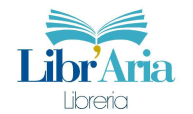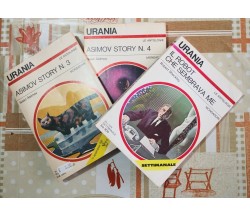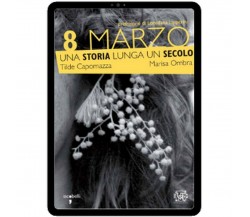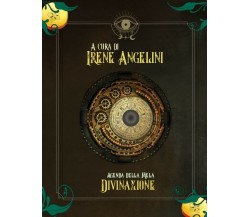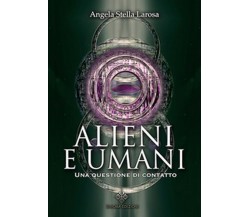Il Tuo Carrello è vuoto
The Chosen Few
Aesthetics and Ideology in Football Fan Graffiti and Street Art
di Mitja Velikonja
Editore: DOPPELHOUSE PR
EAN: 9781954600027
ISBN: 195460002X
Pagine: 142
Formato: Paperback
Addresses current events and tensions in sport, from "taking the knee" to the failed 'coup attempt' by billionaires to create a soccer Super League in April 2021, which was thwarted in part by fan protests. Examines the strong racial disparities in fans' treatment of players shown after the European Champions Cup in July 2021 through an analysis of fans' visual subculture. Shows that fans and players are the stakeholders in sport and have the power to change unfair economic and racial dynamics, specifically through the influence of their own culture. Reveals where soccer has a race problem, an extremist problem, and a fascist problem, which are social problems to be addressed through the mirror of fan culture. Links the rise of extremism to a culture of acceptable lies, exaggerations, and contradictions, and shows how this plays out literally on the field of pseudo-sport that is the cultural arena. Useful for soccer fans, graffiti artists, journalists, visual culture students, artists, and the wider world of people who are passionate about soccer or any competitive team sport. Readers experience the unexpected visual richness and variety of twenty-years' worth of European football fan graffiti culture through extracts from the author's archive of several thousand images. Presents a vicarious but analytical experience of sports mania's immersive reality, distinguishing this book from the many other Ultras books told as "war journalism" or celebrity books. The extreme fandom of the Ultras holds visceral fascination for many people, but some will want to go deeper into its ideological underpinnings, and this book's clear examples give background for critical, sociological study of this landscape, including its many problematic contradictions. Readers gain an expert's eye view on graffiti and street art trends. The author leads graffiti "tours" and teaches the study of graffiti to his university classes at home and abroad (Yale and NYU in the United States, the Netherlands, Russia, Croatia etc.). Provides an analytical framework for visual analysis of ideological markers, both common and uncommon, so readers come away from the book able to see their own cultural landscapes in new ways. The author encourages a new generation of subcultural visual anthropologists and cultural studies enthusiasts to seriously study every manner of expression and decoration that connotes "belongingness" to a subcultural group. Readers learn of the importance of graffiti and street art as cultural activities of dissensus and protest within functional democracies. Compares historical sports graffiti to American examples of protest graffiti and street art from the tumultuous Trump era. The author argues that factions created by "us vs them" mentalities harness division for pleasure in the culture of sport, and that this is a rich source of human connection. However, in times of political instability and within certain contexts, we come to understand the dangers of symbologies used to differentiate factions if they (as some Ultras do) associate their "turf" with current or past nationalisms in real political terms. Provides a window and complex way to understand the nature of factions and fans, and at the same time, is a critical look at claims by fans (and by extension, other people) who use "jokes" and memes to make extreme views seem less harmless. Provides interesting and vital facts about extremist groups and militants in Europe recruiting youth and others from football fan terraces. Passionate and engaging, the author is from Slovenia and lived close to the 1990s' wars in the Balkans, so when he writes about political divisions from this time and place, he is speaking from having seen in his region the factional violence and its devastation on culture. It is by no means a detached analysis. The author has frequently been commended for his critical research and approach, has received several awards, including a Fulbright, and has been invited to lecture at universities around the world.
Aesthetics and Ideology in Football Fan Graffiti and Street Art
di Mitja Velikonja
Editore: DOPPELHOUSE PR
EAN: 9781954600027
ISBN: 195460002X
Pagine: 142
Formato: Paperback
Addresses current events and tensions in sport, from "taking the knee" to the failed 'coup attempt' by billionaires to create a soccer Super League in April 2021, which was thwarted in part by fan protests. Examines the strong racial disparities in fans' treatment of players shown after the European Champions Cup in July 2021 through an analysis of fans' visual subculture. Shows that fans and players are the stakeholders in sport and have the power to change unfair economic and racial dynamics, specifically through the influence of their own culture. Reveals where soccer has a race problem, an extremist problem, and a fascist problem, which are social problems to be addressed through the mirror of fan culture. Links the rise of extremism to a culture of acceptable lies, exaggerations, and contradictions, and shows how this plays out literally on the field of pseudo-sport that is the cultural arena. Useful for soccer fans, graffiti artists, journalists, visual culture students, artists, and the wider world of people who are passionate about soccer or any competitive team sport. Readers experience the unexpected visual richness and variety of twenty-years' worth of European football fan graffiti culture through extracts from the author's archive of several thousand images. Presents a vicarious but analytical experience of sports mania's immersive reality, distinguishing this book from the many other Ultras books told as "war journalism" or celebrity books. The extreme fandom of the Ultras holds visceral fascination for many people, but some will want to go deeper into its ideological underpinnings, and this book's clear examples give background for critical, sociological study of this landscape, including its many problematic contradictions. Readers gain an expert's eye view on graffiti and street art trends. The author leads graffiti "tours" and teaches the study of graffiti to his university classes at home and abroad (Yale and NYU in the United States, the Netherlands, Russia, Croatia etc.). Provides an analytical framework for visual analysis of ideological markers, both common and uncommon, so readers come away from the book able to see their own cultural landscapes in new ways. The author encourages a new generation of subcultural visual anthropologists and cultural studies enthusiasts to seriously study every manner of expression and decoration that connotes "belongingness" to a subcultural group. Readers learn of the importance of graffiti and street art as cultural activities of dissensus and protest within functional democracies. Compares historical sports graffiti to American examples of protest graffiti and street art from the tumultuous Trump era. The author argues that factions created by "us vs them" mentalities harness division for pleasure in the culture of sport, and that this is a rich source of human connection. However, in times of political instability and within certain contexts, we come to understand the dangers of symbologies used to differentiate factions if they (as some Ultras do) associate their "turf" with current or past nationalisms in real political terms. Provides a window and complex way to understand the nature of factions and fans, and at the same time, is a critical look at claims by fans (and by extension, other people) who use "jokes" and memes to make extreme views seem less harmless. Provides interesting and vital facts about extremist groups and militants in Europe recruiting youth and others from football fan terraces. Passionate and engaging, the author is from Slovenia and lived close to the 1990s' wars in the Balkans, so when he writes about political divisions from this time and place, he is speaking from having seen in his region the factional violence and its devastation on culture. It is by no means a detached analysis. The author has frequently been commended for his critical research and approach, has received several awards, including a Fulbright, and has been invited to lecture at universities around the world.
Scrivi una recensione
Nome:
La tua recensione:
Note: HTML non è tradotto!
Voto: Pessimo Buono
Inserisci il codice mostrato in figura:

